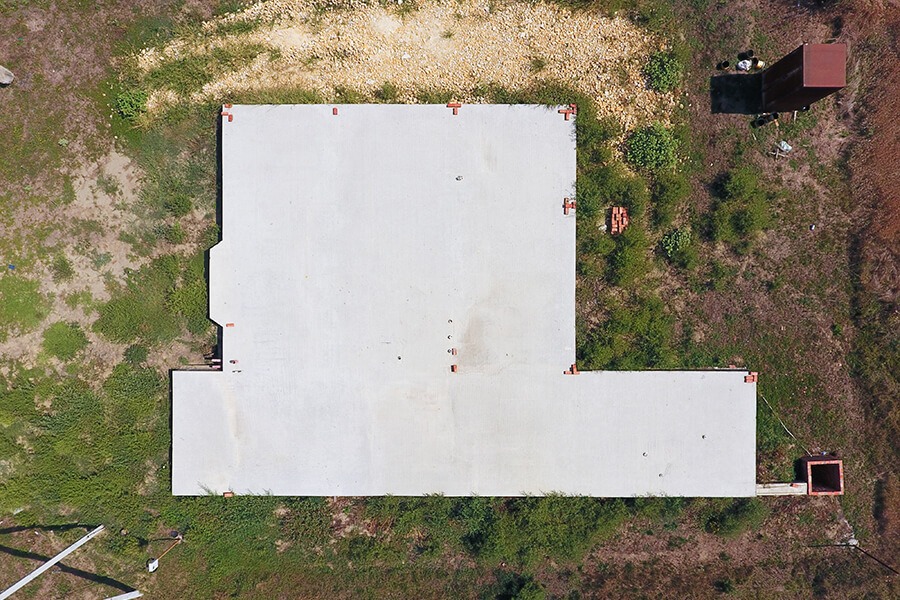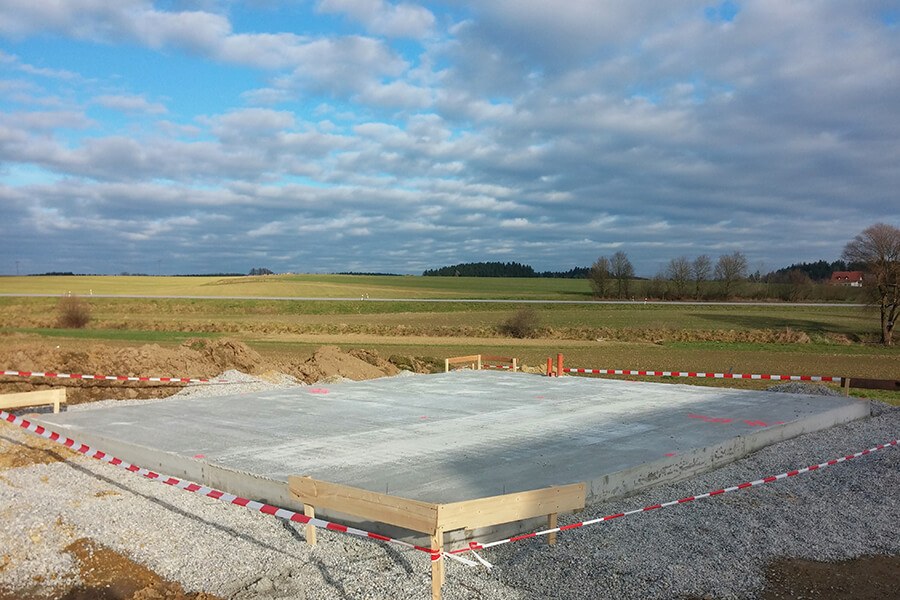Have you ever heard someone saying “You can’t build a great building on a weak foundation” or “You are as solid as what you build on”? The word “foundation” is used so very often metaphorically but such sayings come from literal facts. The foundation really is the most important part of the building. This is why we want to tell you more about log cabins foundations.
We have already discussed types of log cabins foundations and some finishing details. However, we also want to cover the most common mistakes when building a foundation for your log cabin. One little slip could affect your future log cabin very negatively, cause structural or even respiratory problems. Having a lot of experience with log cabins, we want to share some tips and maybe help you avoid making these mistakes when building your foundation!
Have An Individual Project
The foundation, being one of the most important parts of the log cabin, must have a building project. Think about such things as drainage, plumbing, electrical outlets, heating and ventilation in advance because they are related to the base. Your builders should also hear more from you regarding thefoundation than just a few short sentences. The best way is to have a structural engineer prepare or at least approve your foundation project. The engineer takes into account your building project and the soil. He becomes responsible for the foundation project. This way, you can be certain that the foundation will be built correctly.
Another important thing is that you should not just copy any typical foundation project or your neighbour’s one. The soil, an essential factor when building the base, can be different in your area than it is in your neighbour’s. When not preparing the project individually, there is a risk of choosing poor options that might eventually result in shorter lifespan of your log cabin.
More About Soil

Before building the foundation, the soil must be adequately compacted. In the opposite scenario, the soil can behave very unpredictably when it gets wet, affecting the foundation negatively. In the long run, it might even result in the building shifting.
Also, do not forget that the weather influences the soil a lot. If you build the foundation in cold weather, the soil will be frozen. This can cause structural problems later on. In winter, there can also be too much moisture in the air that could affect the concrete as described below. In the ideal scenario, you would pour the foundation on a nice day with no sign of rain.
Careful With Concrete
One of the problems can be letting the concrete cure too quickly. If you do not keep the concrete sufficiently moist while it cures, it can dry too rapidly, which makes it brittle and more likely to crack. If you let it dry really quickly, sometimes you can see the cracks appearing even before finishing the house itself.
If you do see leaks and cracks, deal with them as soon if possible. Not only can water get in and weaken the structure over time, it is also an invitation for mould and fungi. If you let them grow in peace, it can even result in respiratory problems for the residents of the cabin. If leaks and cracks appear during the construction, seal them as soon and as well as you can. The same thing applies if you notice them later on, although it can be much more difficult then.
The final thing to avoid at all costs is creating hollow spots or voids in the concrete. It can happen if the concrete is being poured too quickly or not carefully. Voids affect the strength of the foundation very much and it can even lead to the foundation breaking.
When you shouldn’t try to save

Make sure that your foundation walls go deep enough. If not, it might cause the base to sink over time, affecting the integrity and strength of the building. Sometimes people try to save money this way but believe us, it really won’t. It is more likely that in the long run you will spend more money because you will have to fix foundation mistakes or your cabin will not serve as long.
You should also make sure that the floor is even. The ground is not perfectly level all the time and you should be aware of such circumstances. If the ground is sloping, it must be reflected in the building project. Otherwise, it can cause all sorts of problems later on, some of them obvious. You wouldn’t want a sloping floor in the building you live and spend time in, right?
Waterproofing And Damp Proofing
Water is one of the biggest causes that lead to foundation problems. In order to protect the base, drainage systems are installed and waterproofing is applied. Foundations are usually made from cement or concrete which are both sturdy materials but have pores. Water can get inside through these pores, then freeze during cold weather, expanding and damaging the foundation. Even if you live in a warm place, water can still weaken your base over time. Not waterproofing your log cabin’s foundation is not making sure it will serve well.
There is also a lot of confusion between waterproofing and damp proofing your base. Damp proofing keeps out the soil moisture while waterproofing keeps out the water itself. Waterproofing is way more effective but it is also more expensive and requires more effort. When deciding whether your foundation needs to be damp proofed or waterproofed, think about the conditions. If the foundation drains are installed correctly at the footing, there is proper surface drainage and no hydrostatic pressure, damp proofing should be enough. If not, if the soil and water conditions are not very good or if you are planning to live in this log cabin, it might be better to choose waterproofing.
Depending on your area, you might also require foundation vents. Foundation vents ensure that the air moves freely and dries up the moisture. Therefore, no mould or fungi have the chance to appear.
In short
Take into account your future log cabin, the soil in the area, the weather. Be careful when building the foundation, especially when pouring the concrete. If you notice an issue, fix it as soon as you can. Make sure your base is level and waterproofed. Finally, only continue building your log cabin when the foundation is set properly. If you pay attention to all these tips, both your foundation and cabin should be strong and serve for a long time!












